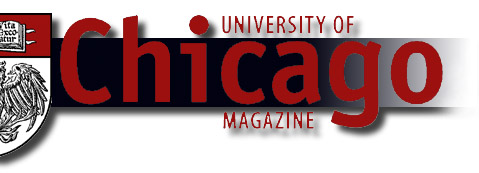 |
 |

John
D. Rockefeller may have thought the University a plant of
slow growth, but William Rainey Harper wanted it to bloom
overnight. For all their mutual attraction, the founder and
the first president were destined to clash.
|
| By Ron Chernow |
Illustrations by Victor Juhasz
|
Standard Oil
baron John D. Rockefeller was, in many ways, an improbable university
founder, for he was not bookish, never attended college, and operated
more in a world of facts than theories.
Yet precisely
because Rockefeller had missed college, no school could stake a
claim on him. While he had the option of distributing his educational
largesse widely, such dispersed giving didn’t jibe with his philosophy.
In religion and education no less than in business, Rockefeller
thought it a mistake to prop up weak entities that might otherwise
perish in the evolutionary race. “I think mistakes are made by organizing
too many feeble institutions—rather consolidate and have good, strong
working church organizations,” he wrote in 1886—a remark that could
have applied to his educational views. In the long run, Rockefeller
transposed to philanthropy the same principle of consolidation that
had worked so well for him in business. Worn down by masses of people
clamoring for his money, Rockefeller knew that he now needed a larger
and more efficient method for disposing of his fortune.
Instead of
making isolated gifts, Rockefeller wanted to finance institutions
whose research would have a pervasive influence. Of the University
of Chicago, he later said, “Following the principle of trying to
abolish evils by destroying them at the source, we felt that to
aid colleges and universities, whose graduates would spread their
culture far and wide, was the surest way to fight ignorance and
promote the growth of useful knowledge.” To Rockefeller, the least
imaginative use of money was to give it to people outright instead
of delving into the causes of human misery. “That has been our guiding
principle, to benefit as many people as possible,” he affirmed.
“Instead of giving alms to beggars, if anything can be done to remove
the causes which lead to the existence of beggars, then something
deeper and broader and more worthwhile will have been accomplished.”
Businessmen
such as Rockefeller and Andrew Carnegie saw themselves as applying
their managerial wisdom to the charity world. As at Standard Oil,
Rockefeller wanted to reduce waste and duplication in the charitable
sphere and deplored the lack of study behind much giving. "Today
the whole machinery of benevolence is conducted upon more or less
haphazard principles," he stated in his memoirs. The Universityof
Chicago was Rockefeller's signature project.
In May 1888
a group of Baptist leaders met in Washington to form the American
Baptist Education Society (ABES). For Rockefeller, the new group
was providential, promising to serve as a handy conduit for channeling
large amounts of money to worthy, well-researched Baptist schools.
Serving as
executive secretary of the group was a fiery, articulate young Baptist
minister, the 35-year-old Frederick T. Gates, who had recently resigned
a pastorate in Minnesota and now gravitated toward more worldly
affairs. Soon after he assumed the post, Gates championed a Baptist
university in Chicago to fill a glaring void. The eastern churches
held more money, but the faster-growing part of the membership resided
in the Mississippi Valley and Great Lakes region. Before writing
his report, Gates conducted an intensive study of Baptist education
with prosecutorial zeal and ministerial fervor. Because many Baptist
schools were located in rural backwaters, midwestern congregants
often attended schools of other denominations. Having tripled in
size in two decades and ranking as America’s second largest metropolis
with 1.7 million residents, Chicago seemed the optimal site for
a major college.
|



